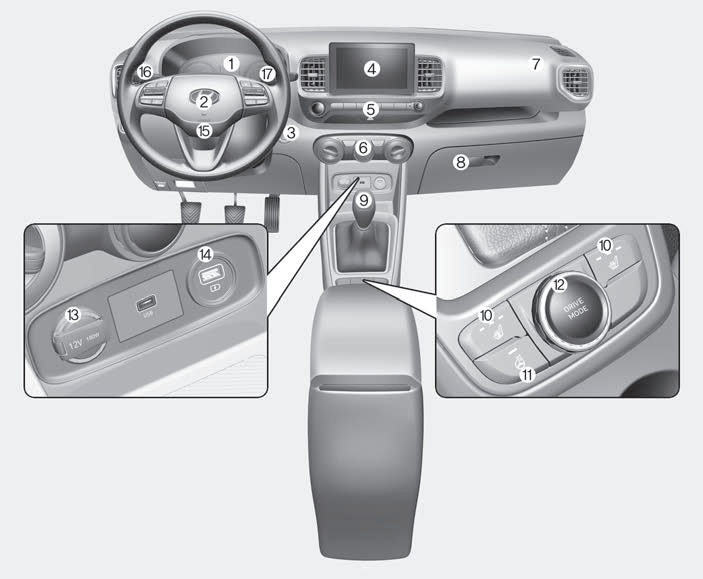Hyundai Venue: Restraint / Repair procedures
Hyundai Venue (QX) (2020-2025) Service Manual / Restraint / Repair procedures
| Component Replacement After Deployment |
|
When the front airbag(s) deployed after a collision, replace the following items.
| – |
SRSCM
|
| – |
Deployed airbag(s)
|
| – |
Front, Rear Seat belt pretensioner(s)
|
| – |
Front impact sensors
|
| – |
SRS Wiring harnesses
|
| – |
Inspect the clock spring for heat damage.
If any damage found, replace the clock spring.
|
When the side/curtain airbag(s) deployed after a collision, replace the following
items.
| – |
SRSCM
|
| – |
Deployed airbag(s)
|
| – |
Side impact sensor(s) for the deployed side(s)
|
| – |
SRS Wiring harnesses
|
| – |
Front, Rear Seat belt pretensioner(s)
|
After the vehicle is completely repaired, confirm the SRS airbag system is OK.
| – |
Turn the ignition switch ON; the SRS indicator should come on for about
six seconds and then go off.
|
 Description and operation
Description and operation
Warning Lamp Activation
Warning Lamp Behavior after Ignition On
As soon as the operating voltage is applied to the SRSCM ignition input, the
SRSCM activates the warning lamp for a LED lamp check...
 SRSCM
SRSCM
..
Other information:
Hyundai Venue (QX) (2020-2025) Service Manual: Cruise Control (CC) Switch. Repair procedures
Inspection 1. Loosen the cruise control switch connector. 2. Check for resistance between terminals in each switch position. Switch Connector terminal Resistance (±5%) Cancel 2 - 6 330Ω SET - 610Ω RES + 910Ω Cruise ON/OFF 1...
Hyundai Venue (QX) (2020-2025) Service Manual: Spark Plug. Description and operation
Description A spark plug is a device for delivering electric current from an ignition system to the combustion chamber of a spark-ignition engine to ignite the compressed fuel/air mixture therein by means of an electric spark, while containing combustion pressure within the engine...
Categories
- Manuals Home
- 1st Generation Venue Owners Manual
- 1st Generation Venue Service Manual
- Operating Door Locks from Outside the Vehicle
- Shift-lock system, Shift-lock release, Parking
- Remote start
- New on site
- Most important about car
Instrument Panel Overview

1. Instrument cluster
2. Horn
3. Key ignition switch/ Engine Start/Stop button
4. Infotainment system
5. Hazard warning flasher switch
Copyright © 2025 www.hvenueqx.com

